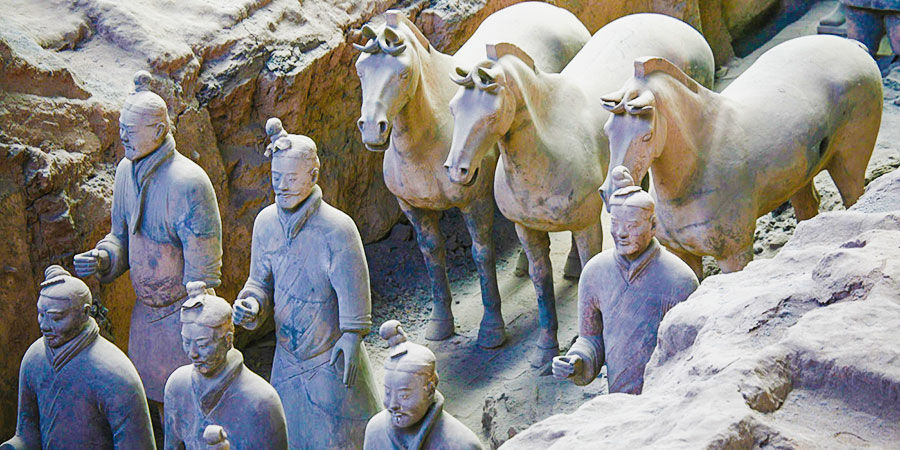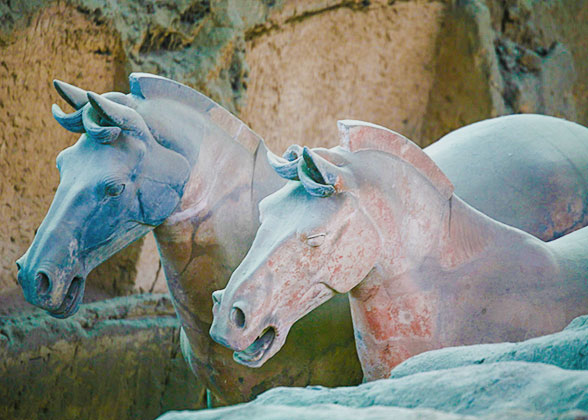Stallions or mares are the war horses in the Terracotta Army?
People basically have no doubt that all the Terracotta Warriors are males, showed obviously by their hairstyles. But many are confused and curious about the sex of those terracotta horses. In order to tell whether these war horses are stallions or mares, we can take a look at their sex organs as well as teeth.
They are Stallions, told by the Number of Canine Teeth.
 |
| Terracotta Warriors and Horses |
There are also Castrated Horses.
Why are the war horses castrated? One reason is that the stallions, in the presence of mares that are in estrus, difficult to control, ancient people would castrate some stallions to make them more docile, so as to meet military demands. Moreover, the modern science has proved that if a stallion is castrated when it is very young, it will grow taller and bigger. Ancient people probably had also noticed this phenomenon.
What are the Stallions and Castrated Horses used for?
 By observing their saddleries, archeologists drew a conclusion that all the horses pulling the carts and chariots are castrated horse, and others ridden by soldiers are either castrated horses or stallions.
By observing their saddleries, archeologists drew a conclusion that all the horses pulling the carts and chariots are castrated horse, and others ridden by soldiers are either castrated horses or stallions.Why study the war horses in the Terracotta Army?
Most scholars believe that the existence of wild horse in China can date back to Early Stone Age. During Shang Dynasty (17th century BC-1046BC), domestic horses began to appear around the middle and lower reaches of the Yellow River. However, there is no clear record about the horse castration at that time. Luckily, the lifelike horses in the Terracotta Army tell that people in China has acquired horse castration skill 2,200 years ago.
Further Reading
- Last updated on Aug. 14, 2024 by Catherine He -